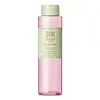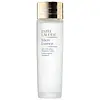What's inside
What's inside
 Key Ingredients
Key Ingredients

 Benefits
Benefits

 Ingredients Side-by-side
Ingredients Side-by-side

Water
Skin ConditioningRosa Damascena Flower Water
MaskingPropanediol
SolventGlycerin
HumectantAloe Barbadensis Leaf Juice
Skin ConditioningSodium PCA
HumectantPEG-40 Hydrogenated Castor Oil
EmulsifyingTriethyl Citrate
MaskingRose Extract
Skin ConditioningPhenoxyethanol
PreservativeRosa Canina Bud Extract
Skin ConditioningCamellia Sinensis Leaf Extract
AntimicrobialSambucus Nigra Flower Extract
RefreshingChamomilla Recutita Flower Extract
MaskingSodium Hyaluronate
HumectantBetaine
HumectantSodium Citrate
BufferingMontmorillonite
AbsorbentCitric Acid
BufferingDisodium EDTA
Ethylhexylglycerin
Skin ConditioningPotassium Sorbate
PreservativeSodium Benzoate
MaskingWater, Rosa Damascena Flower Water, Propanediol, Glycerin, Aloe Barbadensis Leaf Juice, Sodium PCA, PEG-40 Hydrogenated Castor Oil, Triethyl Citrate, Rose Extract, Phenoxyethanol, Rosa Canina Bud Extract, Camellia Sinensis Leaf Extract, Sambucus Nigra Flower Extract, Chamomilla Recutita Flower Extract, Sodium Hyaluronate, Betaine, Sodium Citrate, Montmorillonite, Citric Acid, Disodium EDTA, Ethylhexylglycerin, Potassium Sorbate, Sodium Benzoate
Water
Skin ConditioningBifida Ferment Lysate
Skin ConditioningPEG-75
HumectantPropanediol
SolventButylene Glycol
HumectantBetaine
HumectantPentylene Glycol
Skin ConditioningLactobacillus Ferment
Skin ConditioningAcetyl Hexapeptide-8
HumectantAcetyl Glucosamine
Skin ConditioningTrehalose
HumectantCaffeine
Skin ConditioningSodium Hyaluronate
HumectantAnthemis Nobilis Flower Extract
MaskingCaprylyl Glycol
EmollientCarbomer
Emulsion StabilisingPPG-5-Ceteth-20
EmulsifyingCitric Acid
BufferingPotassium Sorbate
PreservativeSodium Citrate
BufferingTromethamine
BufferingDisodium EDTA
Phenoxyethanol
PreservativeWater, Bifida Ferment Lysate, PEG-75, Propanediol, Butylene Glycol, Betaine, Pentylene Glycol, Lactobacillus Ferment, Acetyl Hexapeptide-8, Acetyl Glucosamine, Trehalose, Caffeine, Sodium Hyaluronate, Anthemis Nobilis Flower Extract, Caprylyl Glycol, Carbomer, PPG-5-Ceteth-20, Citric Acid, Potassium Sorbate, Sodium Citrate, Tromethamine, Disodium EDTA, Phenoxyethanol
 Reviews
Reviews

Ingredients Explained
These ingredients are found in both products.
Ingredients higher up in an ingredient list are typically present in a larger amount.
Betaine is a common humectant (a substance that promotes retention of moisture). It's known to be gentle on the skin and can help balance hydration.
This ingredient is best for improving hydration and soothing irritated skin. Studies also show it helps even out skin tone.
Fun fact: Betaine is naturally created in the skin and body. The kind found within cosmetic products can be either plant-derived or synthetic.
Another name for betaine is trimethylglycine.
Learn more about BetaineCitric Acid is an alpha hydroxy acid (AHA) naturally found in citrus fruits like oranges, lemons, and limes.
Like other AHAs, citric acid can exfoliate skin by breaking down the bonds that hold dead skin cells together. This helps reveal smoother and brighter skin underneath.
However, this exfoliating effect only happens at high concentrations (20%) which can be hard to find in cosmetic products.
Due to this, citric acid is usually included in small amounts as a pH adjuster. This helps keep products slightly more acidic and compatible with skin's natural pH.
In skincare formulas, citric acid can:
While it can provide some skin benefits, research shows lactic acid and glycolic acid are generally more effective and less irritating exfoliants.
Most citric acid used in skincare today is made by fermenting sugars (usually from molasses). This synthetic version is identical to the natural citrus form but easier to stabilize and use in formulations.
Read more about some other popular AHA's here:
Learn more about Citric AcidDisodium EDTA plays a role in making products more stable by aiding other preservatives.
It is a chelating agent, meaning it neutralizes metal ions that may be found in a product.
Disodium EDTA is a salt of edetic acid and is found to be safe in cosmetic ingredients.
Learn more about Disodium EDTAPhenoxyethanol is a preservative that has germicide, antimicrobial, and aromatic properties. Studies show that phenoxyethanol can prevent microbial growth. By itself, it has a scent that is similar to that of a rose.
It's often used in formulations along with Caprylyl Glycol to preserve the shelf life of products.
Potassium Sorbate is a preservative used to prevent yeast and mold in products. It is commonly found in both cosmetic and food products.
This ingredient comes from potassium salt derived from sorbic acid. Sorbic acid is a natural antibiotic and effective against fungus.
Both potassium sorbate and sorbic acid can be found in baked goods, cheeses, dried meats, dried fruit, ice cream, pickles, wine, yogurt, and more.
You'll often find this ingredient used with other preservatives.
Learn more about Potassium SorbatePropanediol is an all-star ingredient. It softens, hydrates, and smooths the skin.
It’s often used to:
Propanediol is not likely to cause sensitivity and considered safe to use. It is derived from corn or petroleum with a clear color and no scent.
Learn more about PropanediolSodium Citrate is the sodium salts of citric acid. In skincare, it is used to alter pH levels and acts as a preservative.
Its main functions are to maintain the pH of a product and neutralize metal ions.
The acidity of our skin is maintained by our glands and skin biome; normal pH level of skin is slightly acidic (~4.75-5.5).
Being slightly acidic allows our skin to create an "acid mantle". This acid mantle is a thin barrier that protects our skin from bacteria and contaminants.
Learn more about Sodium CitrateSodium Hyaluronate is hyaluronic acid's salt form. It is commonly derived from the sodium salt of hyaluronic acid.
Like hyaluronic acid, it is great at holding water and acts as a humectant. This makes it a great skin hydrating ingredient.
Sodium Hyaluronate is naturally occurring in our bodies and is mostly found in eye fluid and joints.
These are some other common types of Hyaluronic Acid:
Learn more about Sodium HyaluronateWater. It's the most common cosmetic ingredient of all. You'll usually see it at the top of ingredient lists, meaning that it makes up the largest part of the product.
So why is it so popular? Water most often acts as a solvent - this means that it helps dissolve other ingredients into the formulation.
You'll also recognize water as that liquid we all need to stay alive. If you see this, drink a glass of water. Stay hydrated!
Learn more about Water